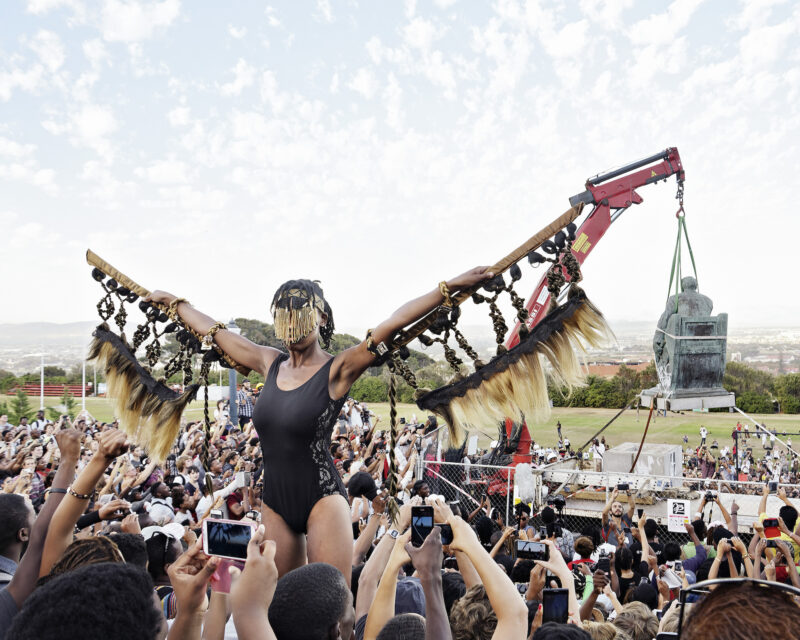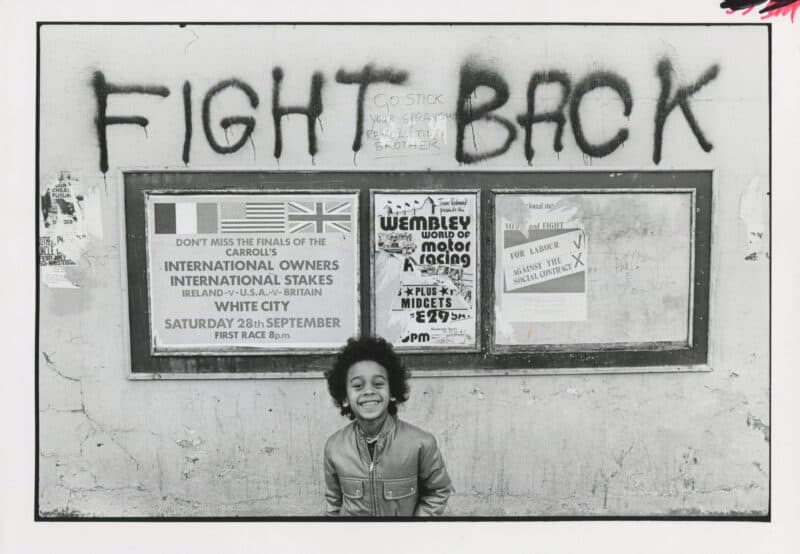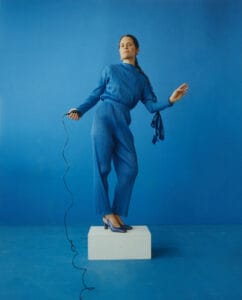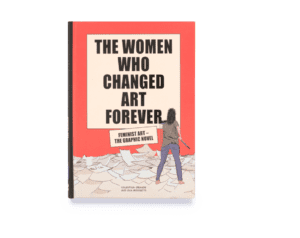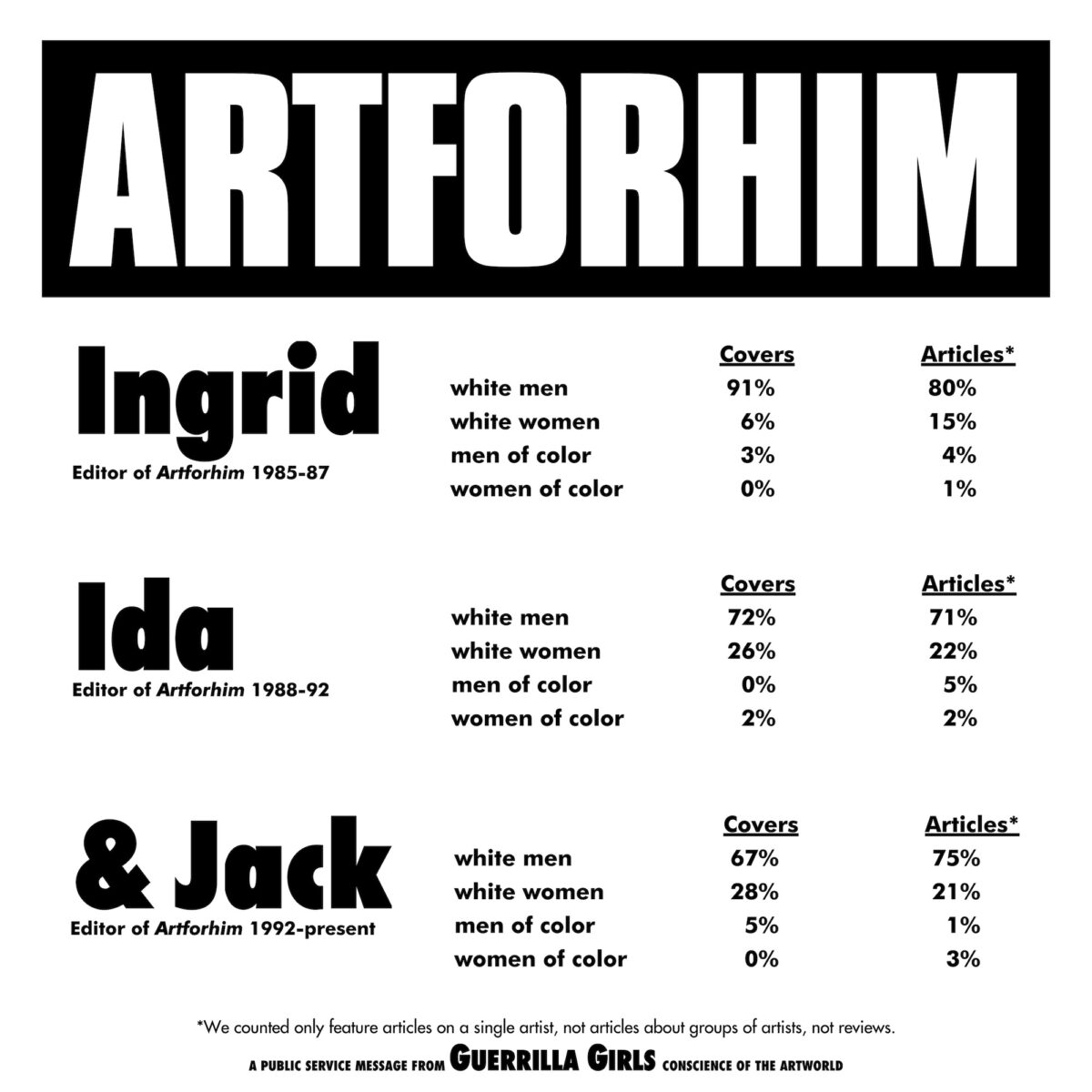
Hannah Traore Gallery to present Discrimi-NATION: Guerrilla Girls on Bias, Money, and Art, an exhibition by the Guerrilla Girls.
The anonymous collective of feminist-activist artists will present a range of poster works. This marks the first time these works are shown in a commercial gallery setting, and their first show in the Lower East Side in 10 years.
The Guerrilla Girls have persistently approached their mission with a distinct visual flair, combining street art aesthetics, academic research, and a signature irreverence. Founded in 1985, this exhibition traces their decades-long practice of shining light on enduring systemic inequities across race, class, gender, and more, and so inciting meaningful dialogue about cultural value and the urgent need for structural change. Their anonymity, sustained over nearly four decades, underscores their message: the focus is not on the individual artist, but on dismantling the structures that sideline many. In this sweeping and robust selection of works, Discrimi-NATION simultaneously provides historical context and present-day relevance, emphasizing how questions of access, fairness, and representation remain urgent today.
“Discrimi-NATION is, at its core, a show about New York and holding the art industry accountable—an extension of the work we’ve been doing since our earliest posters,”
said a member of The Guerrilla Girls.
“Hannah Traore Gallery is the first commercial gallery to approach us, and to have the courage to produce this exhibition. It’s a privilege and an honor to show with her on the occasion of our 40th anniversary.”
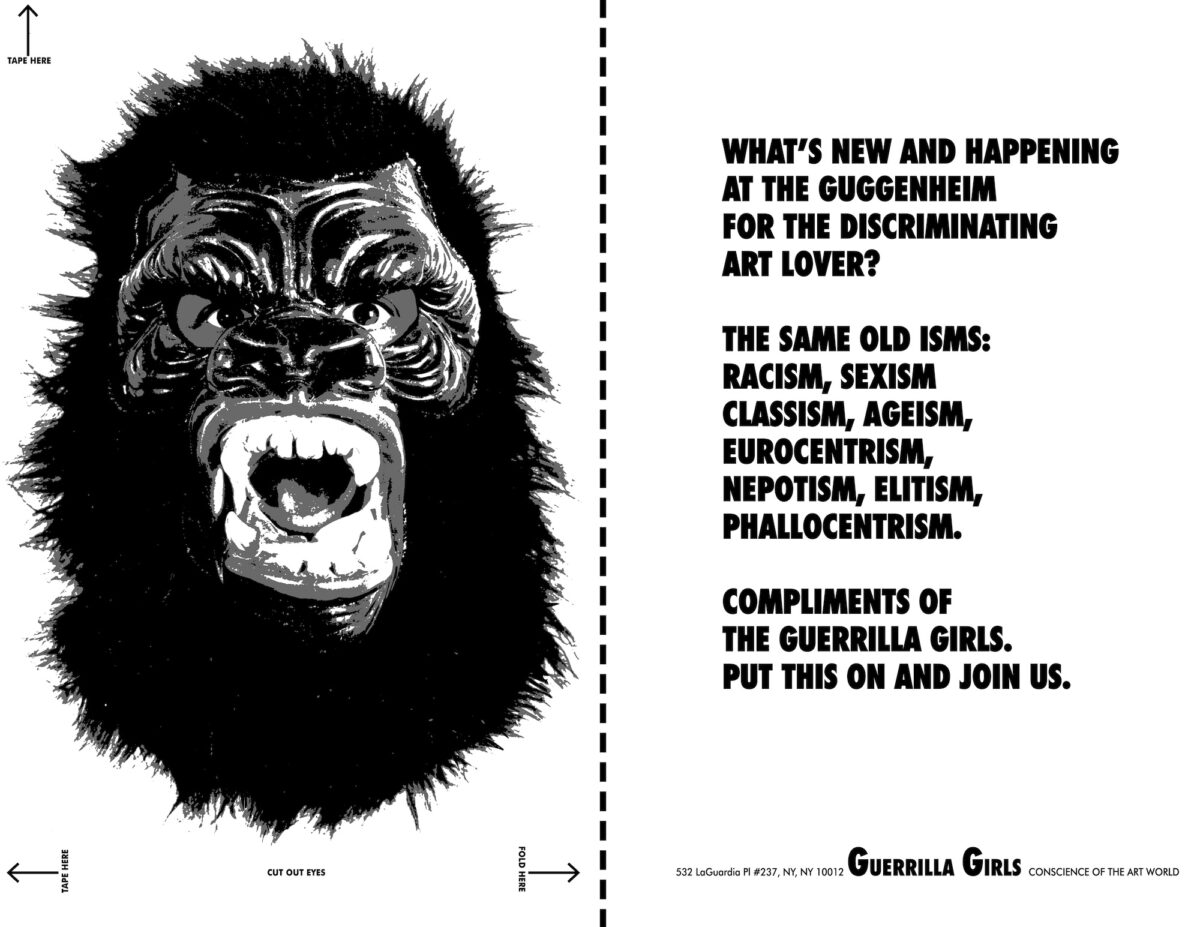
Having pioneered their street-intervention style of art world critique in New York City in 1985, the Guerrilla Girls now return to the cultural epicenter, revisiting the scene of their earliest battles, reaffirming their legacy, and inspiring a new generation to dismantle the status quo. Shortly after their founding, the Guerrilla Girls began wheat-pasting their works throughout the Lower East Side, covering building facades with provocations regarding the woeful underrepresentation of women and minority groups in the city’s art institutions. Their work, woven into the fabric of everyday public life, would incite longstanding conversations far beyond the sanitized confines of museums. They’d go on to post stickers, hand out flyers, and stage guerrilla-style appearances throughout the 80’s and into the 90’s, the neighborhood a burgeoning landscape of artist collectives and community-driven nonprofits that proved to be fertile territory for their activism.
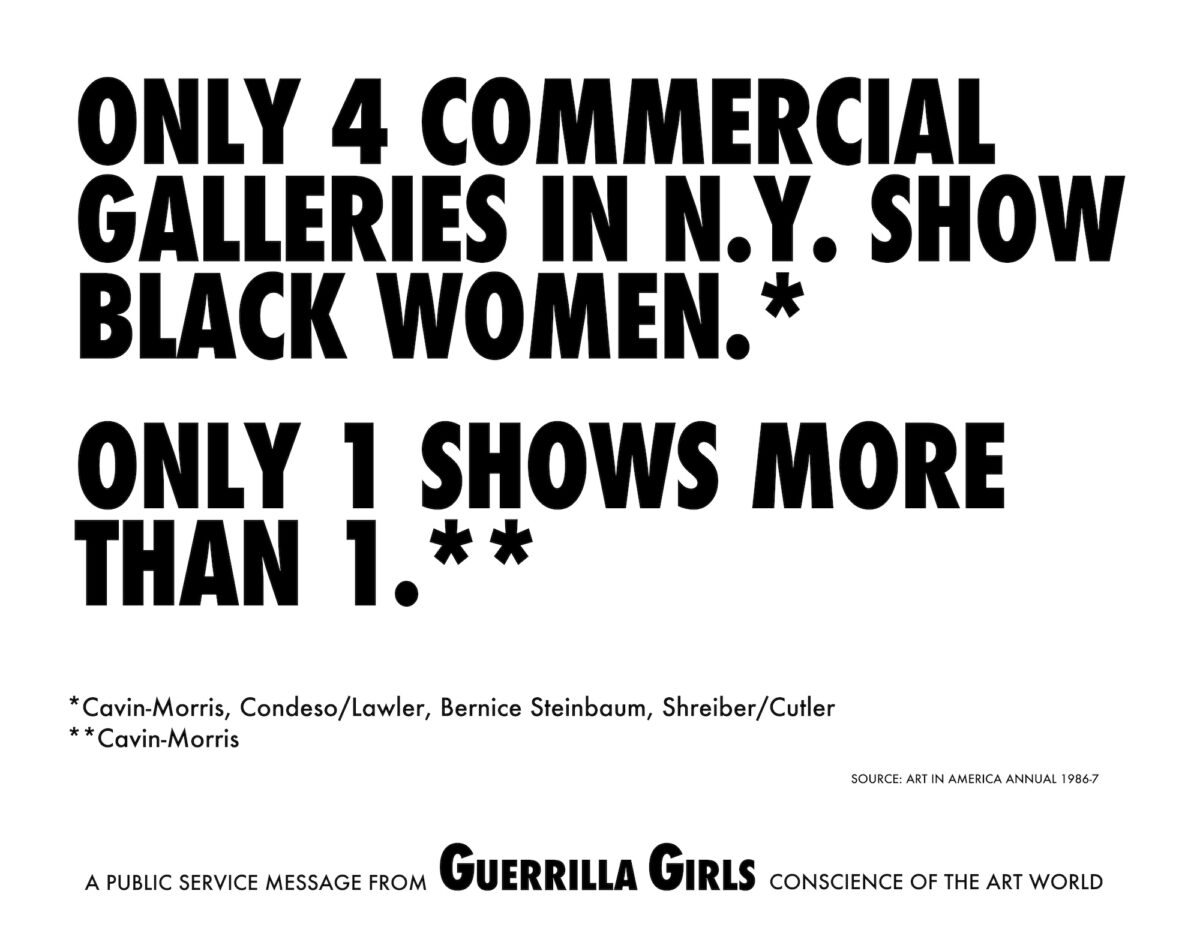
By pairing data-driven facts with bold graphics and sardonic wit, the Guerrilla Girls reveal how art’s perceived neutrality often masks longstanding biases. Pieces such as Only 4 Commercial Galleries in NY Show Black Women (1986) and Guerrilla Girls’ Code of Ethics for Art Museums (1990, updated 2018) spotlight persistent imbalances that continue to shape the field. Later works like Pop Quiz Update (2016) engage evolving cultural conversations, speaking to the complexity of contemporary political and social landscapes. Together, these works encourage viewers to consider the many factors—wealth, institutional tradition, implicit bias—that influence the stories told and the creatives celebrated in the public forum. Throughout, their trademark combination of statistics, humor, and anonymity levels the playing field, their evidence-laden interventions offering unflinching insights of inconvenient truths.
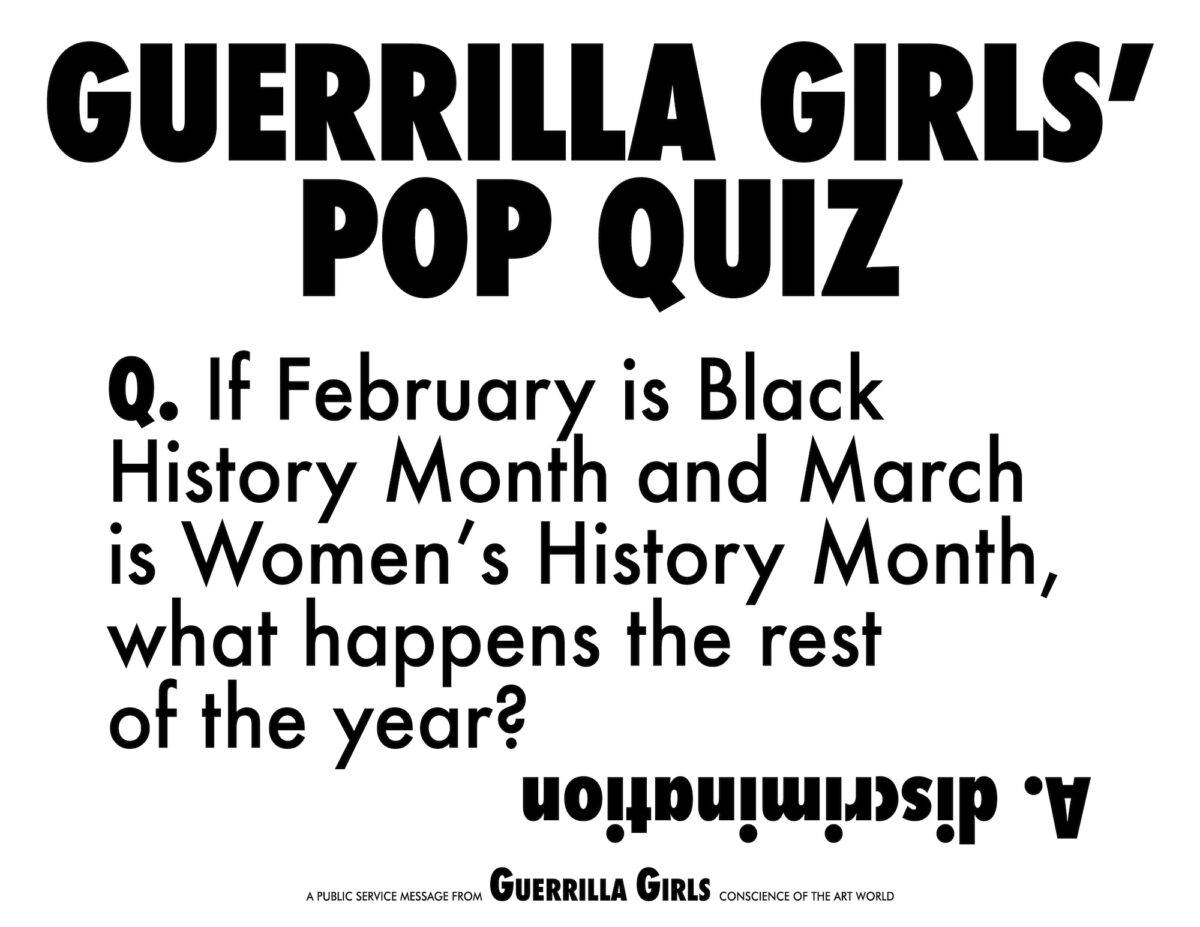
This exhibition highlights Hannah Traore Gallery’s commitment to expanding the boundaries of what belongs in an exhibition setting, championing artists who were previously underrepresented, who challenge established narratives, and who apply ambitious new frameworks of artmaking. The gallery considers itself among the emergent spaces downtown who are indebted to the Guerrilla Girls’ historic campaigns, further inciting new waves of experimental and inclusive art that address social issues, and bring the collective’s irreverence and boldness into a new age. By spotlighting the Guerrilla Girls’ long-running critique of institutional norms, the gallery invites visitors to reflect on ongoing inequalities, consider possible reforms, and envision a more inclusive cultural future.
Guerrilla Girls, Discrimi-NATION January 16th – March 29th 2025, Hannah Traore Gallery
About the artist
The Guerrilla Girls are an anonymous group of activist artists. They use facts, humor and outrageous visuals to expose bias and corruption in politics, art, film, and pop culture. GG has done hundreds of projects (posters, actions, books, videos, stickers) all over the world, as well as interventions and exhibitions inside museums, blasting them on their own walls for their discriminatory practices.
The Guerrilla Girls are intersectional feminists who fight for human rights for all people and all genders, and against ethnic and gender stereotypes, homophobia, transphobia, war, and income inequality. Over 60 individuals have been members of the Guerrilla Girls, some for weeks, some for decades. They wear gorilla masks in public and take the names of dead artists as pseudonyms. They have always been diverse in age, sexual orientation, gender identity, socioeconomic class and ethnic background.
